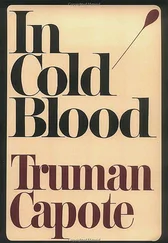The eminent émigré sculptor Jacques Lipchitz had known Soutine in Paris, when he, Soutine, lived coatless and shoeless in bedbug-bitten squalor. That is, until the morning an American collector dropped by his smelly rooms and bought sixty paintings in a single franc-flinging swoop, whereupon the always idiosyncratic Soutine ran into the street, hailed a taxi, and ordered the driver to take him to the French Riviera, two hundred miles away. From that day on, Soutine never cleaned his brushes. When he’d finished for the moment with a particular color, he’d toss the brush over his shoulder and grab a new one from the basketful he’d purchased.
I interviewed Lipchitz at his large studio in Hastings-on-Hudson, high above the river, where, as he was confirming that Soutine, like Pollock, was more interested in the activity of painting (for both it was an act of concentrated frenzy) than in the finished product, I found myself becoming more interested in Lipchitz’s right leg than in his stories.
For working, Lipchitz wore loose-fitting cotton pants, one leg of which had now hitched up to reveal a surprising expanse of bare flesh. The man’s exposed appendage was penguin white, smooth as an egg, and as devoid of hair as a baseball bat. Not a filament, not a whisper of fuzz marred that pristine surface. Neither were there scars, pimples, or evidence of the bulging veins common in men of his age. It was as if he had sculpted his own leg, carving it from a single slab of purest white marble. I couldn’t help but wonder if he might have done something similar with his genitals. What an outbreak of penis envy that could have touched off at the gym!
Then, when he told me that each week Soutine, a Jew, would consult a nun at a convent on the outskirts of Paris regarding her secret remedy for the prevention of baldness, I wondered if Lipchitz had gotten hold of the good sister’s potion and was trying it out on his leg. I mean, he did keep stealing glances at the limb, as if expecting that at any moment a hidden follicle might dilate there and give birth to a perky thread.
Lipchitz was as kind and informative as he was, of course, talented, and even at the time I felt ashamed that I was allowing my imagination to run away with the poor man’s leg.
At the time of his death in a Long Island car crash, Jackson Pollock’s closest friends had been Barnett Newman and Tony Smith. In my several separate interviews with the two artists, I learned that they had a significant connection that preceded their friendship with Pollock. In his twenties, Newman had left his father’s business, intent on becoming a painter, and to that end, he enrolled in an art academy on Eighth Street in Greenwich Village. His primary instructor there was Tony Smith.
At one point, Newman, recently married, invited Smith to his apartment to dine with him and his wife. Smith accepted, and they partook of a fine dinner, served on a mammoth old but elegant table. Upon their marriage, the newlywed Newmans’ families had furnished the flat for them, filling it with pieces that had been in their respective well-to-do households for decades. The various tables, chairs, chests, and stands, even the bedstead, were as thick, heavy, dark, and imposing as one of Soutine’s looming canvases.
After dinner, Newman confided to his teacher his ambition to become not merely a successful painter but a painter of consequence. He asked Smith for advice on how to further that goal. Put on the spot, Smith was silent for an uncomfortable minute or two. Then, looking around, he said, “The first thing you need to do is get rid of all this middle-class Jewish furniture.” He turned and left.
Two weeks later, Smith was surprised when Newman once again invited him to dinner. Tony didn’t tell me why he accepted. Maybe he was tired of eating out, maybe he liked Annie Newman’s home cooking. In any case, he returned to the apartment, where his astonishment instantly multiplied by a factor of ten. All of the furniture, every single stick of it, was gone. Dinner was served atop a packing crate. They ate squatting on the floor.
Smith was starting to think this guy was serious. He wasn’t just another dilettante, he meant business. So, when Newman, at the end of the evening, asked again what he could do to make a contribution to the ongoing mainstream of modernism, Smith replied, “Men know a lot about horizontals. They don’t know much at all about verticals.”
He left it at that, but it was all Barnett Newman needed. Newman went on to build a financially and critically successful career exploring the effects on the eye and the mind of strategically (but seldom predictably) placed vertical bars, shafts, or splinters set tantalizingly close to the edges of vast fields of solid color. Far from the autocratic arrangements of traditional painting, in which the viewer’s eye is compelled to focus on one or more images of the painter’s choosing, any of Newman’s giant canvases issues an invitation — or a challenge — for the spectator himself to make what he would of a vertical entity in an expanse of real — as opposed to pictorial/illusional — space. There is no narrative, there is no seduction or pretty plea, there is only a platform from which we can “feel” elementary verticality as it asserts itself convincingly if unexpectedly against a flat ground.
It’s unfortunate that Tony Smith isn’t around and in a position to advise the human race on verticality because as we continue to procreate like adolescent fruit flies, our affection for the horizontal — for industrial, residential, and even agricultural sprawl — is destroying the earth and the Earth. Visionary architects contemplate structures so tall their tops would actually be in orbit, a park on one floor, hospitals, public libraries, sports arenas, and department stores on others: an entire city inside a single building. And think of vertical farms: towering hydroponic greenhouses each producing more corn, more tomatoes than a million acres currently devoid of wildlife and trees, poisoned by chemicals and greed. If we don’t go up we may go down.
That’s the value of artists, isn’t it? Even when they aren’t aware of it, they’re dreaming our dreams for us.
All things considered, I’ve learned more from talking to painters than talking to writers. Not that painters are smarter than writers, such is seldom the case, but in conversation writers are inclined to waste an inordinate amount of time either bragging or bellyaching about reviews and royalties, complaining about their publishers, or dissing other authors. Painters, being equally insecure, can likewise come across as boring and bitchy — it’s tough being creative in a materialistic society — but since they labor not in vineyards of verbiage but upon ice floes of visual images, they tend to function with fewer inhibitions than the wordsmiths when it comes to vocally exploring and expressing ideas. Since no one judges their speech, comparing it to their written work, they don’t feel so acutely the weight of language.
The painter Morris Graves, for example, verged on nonliterary eloquence when he told me about being awakened before dawn one morning in India by a strange, beautiful, hypnotic sound, a kind of marvelous chanting. At breakfast, he learned that in that village, as in some others in India, the men and boys have gone out each morning since prehistory to chant the sun up. “Cynics scoff,” said Graves with a smile, “but the villagers point out that in all the millennia that they’ve been chanting, the sun has never failed to rise.”
When NASA scientists invited the mystical painter to Cape Kennedy to advise them on matters about which they were becoming increasingly uneasy — areas where astronomy, theoretical physics, and higher mathematics seemed to be inescapably crossing the line into the province of metaphysics — Graves told them about the Indian chanters, suggesting that NASA might do well to incorporate a similarly reverential, less brutal attitude toward space exploration. Graves found many scientists receptive, even agreeing when he argued that to truly “conquer” space, men need to travel inward as well as outward, and do so with the same focus, seriousness, effort, courage, and determination they would devote to searching for life on Mars or establishing a colony on the moon.
Читать дальше












